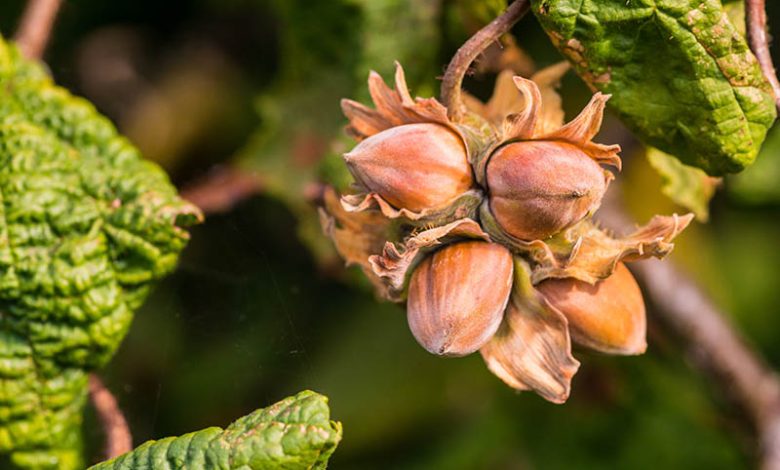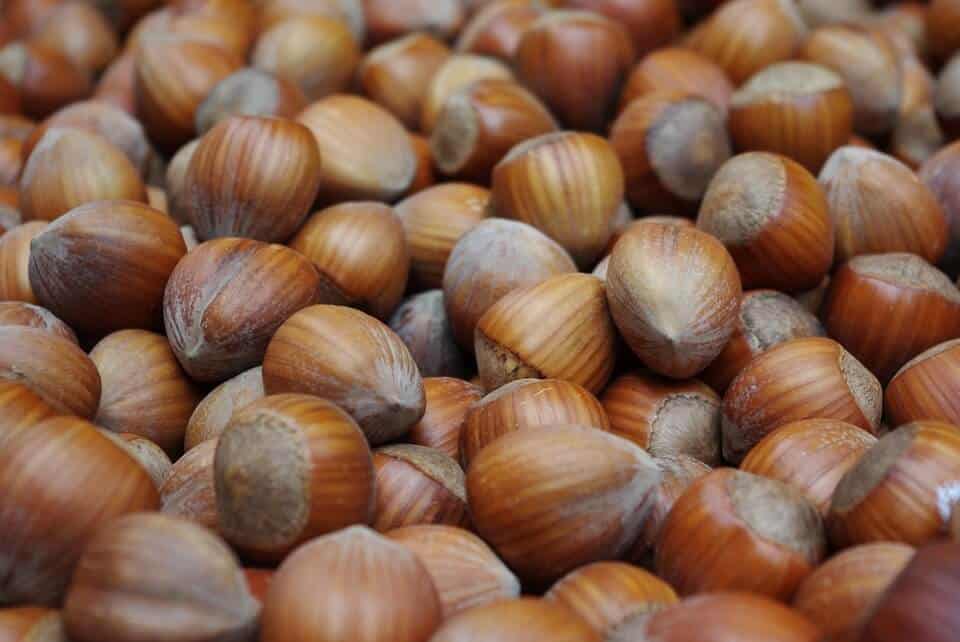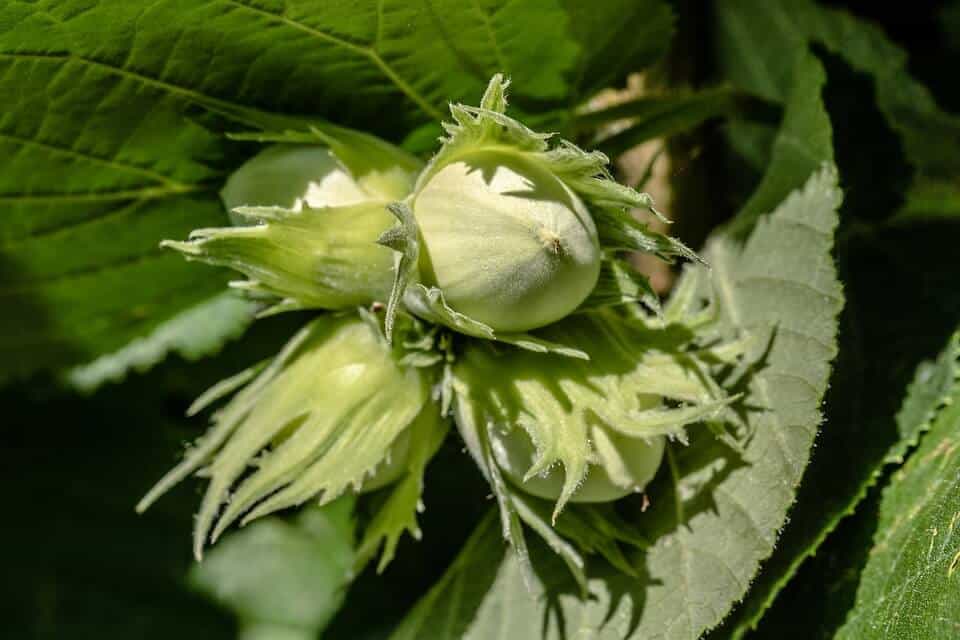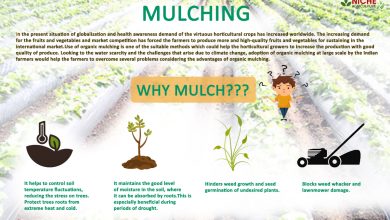How to Plant a Hazelnut and Harvest Your Own Hazelnuts: [Complete Guide]

Important points when sowing hazelnuts
- When to sow? Autumn is the most suitable time.

- Where to do it? In fertile soils of warm climates that oscillate between 12 to 20 °C and have very good drainage.
- Characteristic? It is a large and very leafy tree, which can reach up to 8 meters in height, with rounded leaves of about 12 cm and a reddish bark when young and grayish when old.
- How to prepare the land? It must be rich in nutrients, with good organic matter of up to 2 percent.
- How do we water? It is very sensitive to excess water. The drip irrigation method, in extensive crops, is very useful to support productivity in fruit harvesting.
- What favorable associations does it have? The species Corylus Avellana Nottingham, the Kentish Cob or the Corylus Máxima Purpurea can help improve fruit quality and at least two of them can be combined.
- What pests and diseases does it have? It is attacked by fungi and mites that can be very harmful to its useful life.
When to plant a hazel?
 The hazel tree, a world-famous tree, has one of the most appetizing fruits:the hazelnuts
The hazel tree, a world-famous tree, has one of the most appetizing fruits:the hazelnuts
Its scientific name is Corylus avellana and it is very common to see it in the temperate regions of Europe and Asia.
There are those who say that to plant a hazelnut you only need a fruit and the land. But obviously, the matter of planting fruit trees is much more complex than that. So it is dried fruit.
The hazel tree can growup to about 8 meters high.And autumn is the ideal season for planting your seed, fresh from the plant, or they also serve seeds purchased at the garden store.
Where to plant hazelnuts?
Mustsow the seeds in very fertile landwith excellent drainage and temperate climates with cool temperatures in winter and mild temperatures in summer.
The optimal environment, for example, of the so-calledEuropean hazel ranges between 12 to 20°C.
A garden or large plot of land that allows it to grow freely is ideal, because this tree with an irregular crown expands greatly, greatly multiplying its leaves and branches that diversify from the base and provide a lot of shade.
It grows easily in any terrain, as long as the soil is not too heavy or moist. But choose a slightly shaded location, ideal for this betulaceous.
The bark changes from reddish in its young years to greyish, with the arrival of mature age.
Its rounded leaves fall during the fall and remain absent in the winter. They are about 12 cm long and their colors vary from green to yellowish.
It blooms in spring and its fruit, so coveted, the hazelnut, is formed inside a hard shell or cinnamon -colored shell, which takes up to 8 months to arrive.
It is prudent to comment that this tree is resistant and self-sufficient, despite its large size and the wonderful fruit it gives us every year. Being an important growing tree, it should be known that with a good pruning technique it can be controlled efficiently.
How to prepare the land to grow a hazelnut?
 Although experts say that hazelnut trees are not very demanding in terms of soil, it is advisable to apply the basic recommendations when growing them.
Although experts say that hazelnut trees are not very demanding in terms of soil, it is advisable to apply the basic recommendations when growing them.
But the fertile land of good nutrients, rich in organic matter (between 1.5 and 2 percent) will guarantee a long life for our hazelnut tree. So it is advisable to prepare the soil at least two weeks before transplanting newly germinated seedlings.
So when choosing where to plant a hazel, make sure thatthe soil is light and well-drained,It is essential to later see it bloom and bear fruit.
How do we water hazelnuts?
Irrigation is essential during the growth period of the hazel, but the water will be more spaced with the arrival of maturity. Every 4 days will suffice.
However, it should be noted that during very hot summers irrigation should be increased without allowing water to accumulate under the trunk.
A maintenance pruning in the first years of life is also good to stimulate the production of flowers and fruits.
In large areas of hazelnut cultivation, it is convenient to use the drip irrigation system with approximately2 discharge drippers for each tree,in a total area of use of 4 liters of water per hectare.
How to plant hazelnuts step by step?
When we acquire the seed, we must follow the following steps inherent to the process of planting it in the ground.
- Put the seeds in a glass with water and let them rest for 24 hours. The ones that sink are the ones that will germinate.
- Prepare pots of about 8.5 cms. in diameter at least and about 13 cms. max. We cover them with a universal culture substrate mixed with approximately 30 percent perlite and water them with lime-free water. Sprinkle sulfur or copper to prevent the proliferation of fungi.
- Water and place one seed in each pot, taking care to bring them to the center of the container. Add more substrate and compact.
- With the arrival of spring, we will obtain the first hazelnut seedlings, but we must not go to the garden to plant them until the roots do not come out through the drainage holes that the pot brings.
- Once the land is prepared in the field where our hazelnuts will grow, holes of about 40 cm wide and deep should be opened. A mixture of sand and organic matter should also be incorporated into the holes which will improve initial rooting.
- The framework or planting area of each hazelnut reaches about 5×4 meters. This implies that about 500 trees can be planted in each hectare. A single hectare can report up to 3 thousand kilograms of hazelnuts per year.
What favorable associations does it have?
 Whenever you want to obtain an unsurpassed quality in hazelnut flavor, it is optimal to choosethe species Corylus Avellana Nottingham, the Kentish Cob or the Corylus Máxima Purpurea,three excellent varieties of good hazelnut that can be combined.
Whenever you want to obtain an unsurpassed quality in hazelnut flavor, it is optimal to choosethe species Corylus Avellana Nottingham, the Kentish Cob or the Corylus Máxima Purpurea,three excellent varieties of good hazelnut that can be combined.
Whenever we want to achieve a good production, it is good to plant at least two different varieties of simultaneous flowering, so that the pollination process occurs between neighboring trees.
If, on the other hand, we want a tree for ornamental or decorative purposes in our garden, the Corylus Avellana, Contorta, Avellana Aurea or Corylus Avellana Pendula varieties will be ideal.
How do we harvest hazelnuts?
Did you know…The world’s largest exporter of hazelnuts is Turkey?
Hazelnut harvesting can be done manually or with specialized machinery. Obviously, if you do not enjoy large areas of hazelnut trees, the machinery may be too great an expense to consider.
We will doharvesting hazelnuts when the fruit or shell wilts.
We must be very careful when harvesting hazelnuts, since if we take too long and do not do it at the right time, the fruit will have too much moisture.
We want the fruit to contain a maximum of 7% – 8% moisture. With more humidity, the drying of the same will not be correct and therefore it will not be possible to consume it in its best conditions.
How long does the hazel tree take to produce fruit?
A newly planted hazel does not begin to produce a nut crop until the tree is established.
A first harvest of hazelnuts can be expected between two and five years after planting the tree.
Initial crops are usually small, but as the tree matures, the crops increase in size.
A mature hazelnut tree can produce up to 55 kg of nuts in a single year. Once a tree begins to produce, a new crop of hazelnuts can be expected every year for 50 years.
What pests and diseases does the hazel tree have?
Various pests can attack a hazel tree.
borer
Borer (zeuzerapyrina L) It is an insect of the Lepidoptera order that attacks in summer, acting in the upper part of fruit trees where it parasitizes.
There then begin to appear withered shoots and remains of excrement on the leaves.
That is watered up to branches and trunk. They continue to proliferate until they generate eggs and larvae that multiply inside the wood, until a black – spotted caterpillar of this insect appears, which can measure up to 6cm in length.
This plague is exterminated if a good insecticide is used before flowering and when the first symptoms appear in the armpits of the daughters of the hazel tree.
Hazel Devil
Hazel Devil (Curculionucum L) It is another insect of the order of the Coleoptoros, which forms pests to parasitize in the hazel. It drills into the fruit, opening holes in the hazelnut’s hard bark, whose deformations begin to show and it falls from the branches prematurely.
The development of this insect is rare and can last up to 3 years: Adults in spring feed on the youngest fruits.
The fertilized females, towards the end of the spring season, drill into the fruit and lay their eggs inside. Thus the larva will grow feeding on hazelnut pulp.
This larva then buries itself and can remain that way for up to 3 years, because it builds a cocoon in the ground.
yellow and red spiders
Yellow and red spiders: It is also attacked by yellow spiders (EotetranychuscarpiniOud., Tetranychusurticae Koch) and red spiders (Tetranycopsishorridus Can and Fa., Panonychusulmi Koch)
E. carpini is a very small insect, a yellow mite that causes a lot of damage and gets into cracks in the tree bark. T. urticae attacks plant cover. Both intensify their activity in the spring and suck plant liquids on the underside of the leaves.
Both mites manage to attack the central part of the hazelnut tree, whose leaves turn yellowish until it begins to have a necrotic appearance.
The T horridus and Pulmi spend the winter in the form of an egg inside the trunk and in the branches of the hazel tree. They are red and their eggs hatch in spring, achieving 4 annual generations.
These mites cause great defoliation, causing a reduction in the photosynthetic activity of the tree. The most critical period of the attack occurs between the months of July-August.
It is recommended to apply balanced fertilizers without excess nitrogen, avoiding actions that generate a large vegetative increase.
You have to look for the specific acaricides for each case, wetting the leaves very well, especially on the underside.
How long does a hazel tree live?
A hazel tree has an approximate lifespan of 120 years.
How long does it take to grow a hazel?
At first the hazelnut trees grow quickly and then they slow down a bit. You can have an adult version at 4 or 5 years of life.
Can it be grown in a pot?
Hazelnut trees are being worked on so that they are able to grow in pots and not develop such a prominent root system.
To achieve success it is necessary to choose well the species to cultivate. For example, the Pevotet hazelnut.
How many times does a hazel tree produce fruit?
In a year, the hazelnut tree will only generate a production of fruit because it takes approximately 8 months for them to set and be harvested.
Should a hazel tree be pollinated to obtain fruit?
The hazel tree is pollinated thanks to the fact that it develops male and female flowers that communicate the pollen with the stigma thanks to the action of the wind.
How cold can a hazel tree tolerate?
It is a species that needs cold for the flower buds to develop properly, but it should not be below -8° C because it could freeze.
How many hazelnut trees can be planted per hectare?
Hazelnuts can be worked based on 400 copies per hectare.
What kind of fertilizer does a hazel tree need?
The contribution of a balanced NPK nutrient with microelements is essential for the substrate to offer quality to the crop.
An extra supply of calcium and boron is also needed in the ripening stage of the fruit to help it to have firmness.
How much heat and/or drought can a hazel tree tolerate?
Hazelnuts can be worked dry or irrigated depending on the type of specimen used. The temperature should not be higher than 18° C.
However, those that are kept in drought suffer a significant decrease in productive capacity, since they reach 600 kilos, while with irrigation they can reach up to 3 tons.



![Photo of What Diseases and Pests Attack Bamboo?: [Identify and Treat Them]](https://www.complete-gardening.com/wp-content/uploads/2022/08/what-diseases-and-pests-attack-bamboo-identify-and-treat-them-390x220.jpg)
![Photo of Moss: [Characteristics, Formation, Properties and Reproduction]](https://www.complete-gardening.com/wp-content/uploads/2022/08/moss-characteristics-formation-properties-and-reproduction-390x220.jpg)